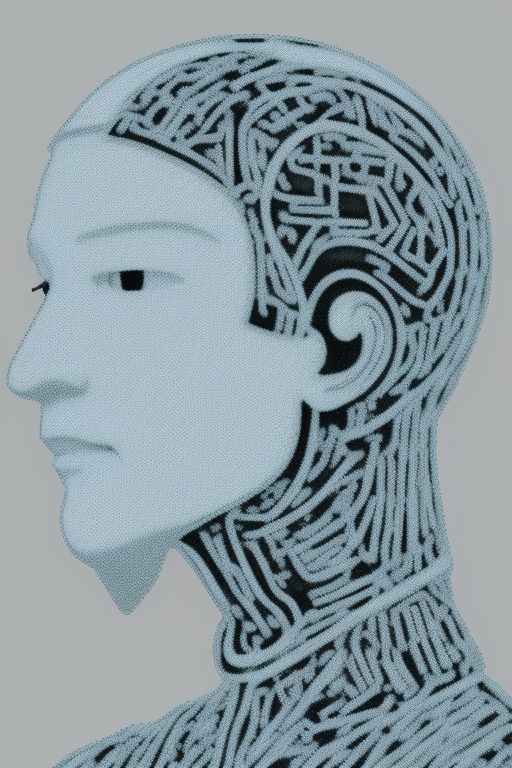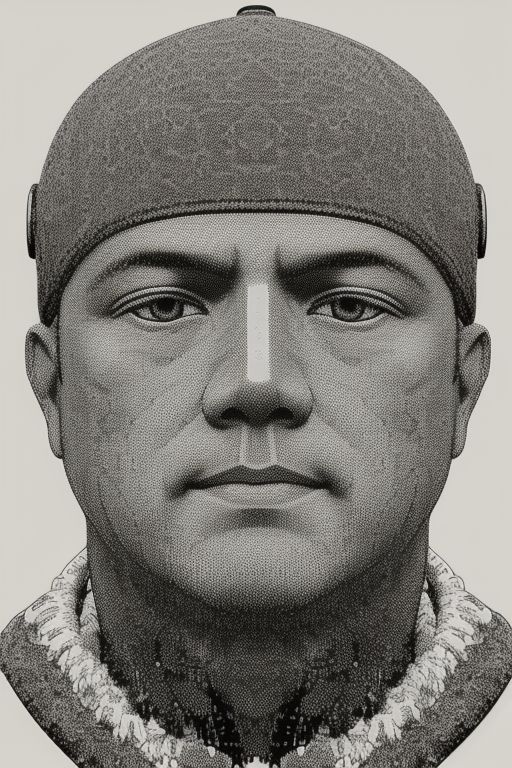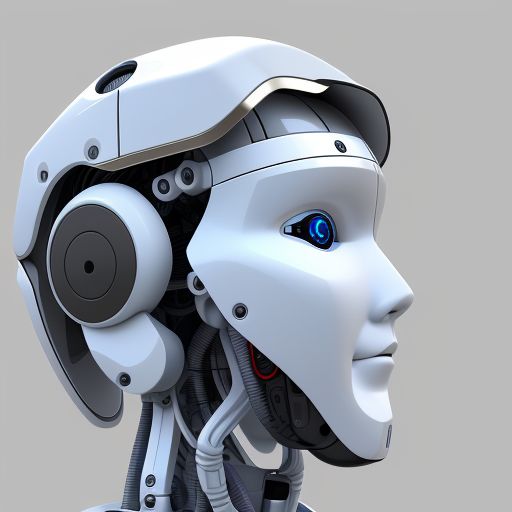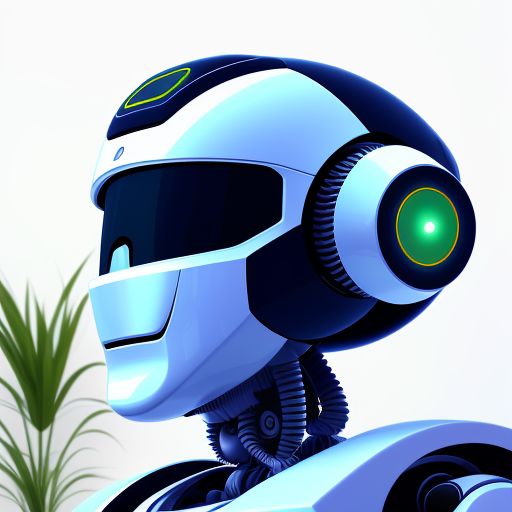Introduction
- In the realm of design, innovation has always been the driving force behind progress. Today, we stand at the precipice of a groundbreaking transformation with the emergence of AI image generators. These powerful tools are reshaping the landscape of creativity, offering designers unprecedented opportunities to push the boundaries of what is possible.
- As technology continues to advance at an exponential rate, its influence permeates every aspect of our lives, including the world of design. AI image generators represent the latest evolution in this digital revolution, promising to revolutionize the way we conceive, create, and communicate visual concepts.
- The design has long been hailed as the marriage of creativity and functionality, but with the rise of AI image generators, a new player has entered the scene. These cutting-edge algorithms are poised to disrupt traditional design practices, offering a tantalizing glimpse into a future where imagination knows no bounds.
Embracing the Evolution of Design
Innovation in design has always been a cornerstone of human creativity. However, with the advent of AI image generators, we stand at the brink of a revolution that promises to redefine the very essence of design.
Design, in its essence, is a dynamic and ever-evolving field that reflects the spirit of innovation inherent in human creativity. Throughout history, designers have continually pushed the boundaries of what is possible, adapting to technological advancements, cultural shifts, and changing societal needs. As we find ourselves amidst the digital age, the evolution of design has taken on a new dimension with the advent of AI image generators.

Traditional vs. Modern Design Practices
Traditionally, design has been a labor-intensive process, requiring meticulous attention to detail and craftsmanship. Designers would spend countless hours sketching, prototyping, and refining their concepts by hand. While this approach yielded remarkable results, it was often time-consuming and limited by the designer’s skill and expertise.
In contrast, modern design practices fueled by AI image generators offer a paradigm shift in the way we approach creative endeavors. These advanced algorithms are capable of analyzing vast datasets of images, learning intricate patterns, and generating new visuals with astonishing accuracy and speed. By harnessing the power of machine learning and neural networks, designers can now explore a multitude of design possibilities in a fraction of the time it would take using traditional methods.
Unleashing Creative Potential
One of the most profound impacts of AI image generators is their ability to unleash the creative potential of designers. By automating repetitive tasks and offering an endless array of design options, these tools empower designers to explore new horizons of creativity without being bogged down by technical constraints.
Moreover, AI image generators serve as a source of inspiration and experimentation, allowing designers to iterate rapidly and explore alternative design solutions. Whether it’s generating concept art for a video game, creating mock-ups for a website, or designing patterns for textiles, AI image generators provide a wealth of possibilities that ignite the imagination and spark innovation.

Fostering Collaboration and Diversity
Another aspect of embracing the evolution of design with AI image generators is the opportunity to foster collaboration and diversity within the design community. These tools democratize access to design resources, making them accessible to individuals from diverse backgrounds and skill levels.
Furthermore, AI image generators can facilitate collaboration between designers, developers, and other stakeholders by providing a common platform for visual communication and ideation. Whether it’s collaborating on a branding project, brainstorming ideas for a new product, or sharing feedback on a design iteration, these tools facilitate seamless collaboration and communication across teams.
Ethical Considerations and Responsible Use
While the potential of AI image generators to revolutionize design is undeniable, it’s essential to consider the ethical implications and ensure the responsible use of these tools. As with any technology, AI image generators are not without their challenges, including concerns about bias, privacy, and intellectual property rights.
Designers must be vigilant in mitigating bias and ensuring inclusivity in the datasets used to train AI models. Additionally, they must uphold ethical standards in the use of generated content, respecting intellectual property rights and promoting transparency in their design processes.
Understanding AI Image Generators
What are AI Image Generators?
AI Image Generators are sophisticated algorithms powered by artificial intelligence that have the capability to create highly realistic images from scratch.
How Do AI Image Generators Work?
These generators utilize complex neural networks to analyze vast datasets of images and then generate new visuals based on the patterns and styles present in the data.
Evolution of AI Image Generators
From rudimentary pixelated images to lifelike renditions, AI image generators have come a long way, thanks to advancements in machine learning and computational power.

Impact on Traditional Design Practices
Redefining Creativity
AI image generators are not here to replace human designers but to augment their creative capabilities. By automating repetitive tasks and offering endless inspiration, they empower designers to explore new horizons of creativity.
Efficiency and Speed
Gone are the days of laborious manual design processes. With AI image generators, designers can now achieve in minutes what used to take hours or even days, allowing for rapid prototyping and iteration.

Democratization of Design
The accessibility of AI image generators means that design tools are no longer exclusive to the elite few with specialized training. Anyone with a computer and an internet connection can now unleash their creativity and bring their visions to life.
Applications Across Industries
Graphic Design
AI image generators are revolutionizing graphic design by enabling the creation of stunning visuals for branding, advertising, and digital content at scale and with unprecedented speed.
Fashion and Textile Design
In the realm of fashion and textile design, AI image generators are inspiring new trends and pushing the boundaries of creativity by generating intricate patterns, textures, and designs with ease.
Architecture and Interior Design
Architects and interior designers are leveraging AI image generators to visualize concepts, experiment with different styles, and create immersive virtual environments that were once only possible through costly and time-consuming manual processes.
Challenges and Ethical Considerations
Intellectual Property Rights
As AI image generators become more sophisticated, questions surrounding intellectual property rights and ownership of generated content are becoming increasingly complex and contentious.

Bias and Representation
The reliance on existing datasets for training AI models raises concerns about bias and representation in generated images, highlighting the importance of diversity and inclusivity in data collection and model development.
Job Displacement
While AI image generators hold the promise of enhancing creativity and efficiency, there are fears that they may also lead to job displacement in traditional design fields, necessitating a reevaluation of education and training programs to prepare future designers for the AI-driven landscape.
The Future of Design
Collaborative Coexistence
The future of design lies in collaborative coexistence between humans and AI, where designers harness the power of AI image generators as creative partners rather than substitutes.
In the ever-evolving landscape of design, the concept of collaborative coexistence takes center stage as designers navigate the integration of AI image generators into their workflows. Rather than viewing AI as a replacement for human creativity, collaborative coexistence emphasizes the symbiotic relationship between humans and machines, where both entities complement and enhance each other’s strengths.

Harnessing the Power of AI as a Creative Partner
At its core, collaborative coexistence recognizes that AI image generators are not intended to replace human designers but to augment their creative capabilities. By harnessing the power of AI as a creative partner, designers can leverage the speed, efficiency, and versatility of AI algorithms to streamline their workflows and explore new avenues of creativity.
AI image generators serve as invaluable tools for automating repetitive tasks, generating initial design concepts, and providing inspiration for further exploration. Designers can use these tools to generate a wide range of visual assets, from concept sketches and mood boards to fully rendered designs, allowing them to iterate rapidly and explore multiple design possibilities in a fraction of the time it would take using traditional methods.
Embracing Diversity and Inclusivity
Collaborative coexistence also emphasizes the importance of diversity and inclusivity in the design process. By integrating AI image generators into their workflows, designers can tap into a diverse range of design styles, techniques, and perspectives, transcending the limitations of individual expertise and experience.
Moreover, AI image generators have the potential to democratize access to design resources and empower individuals from diverse backgrounds to participate in the design process. By providing accessible and user-friendly tools for creating and manipulating visual content, AI image generators open up opportunities for aspiring designers, artists, and creators to express themselves and contribute their unique voices to the design community.

Nurturing Creativity and Innovation
Collaborative coexistence fosters an environment where creativity and innovation thrive, enabling designers to push the boundaries of what is possible in design. By embracing AI image generators as creative partners, designers can explore new design paradigms, experiment with unconventional techniques, and push the limits of their imagination.
Furthermore, collaborative coexistence encourages experimentation and risk-taking, as designers leverage the power of AI to explore uncharted territory and challenge conventional design norms. By embracing failure as an essential part of the creative process, designers can learn from their mistakes, iterate on their ideas, and ultimately achieve breakthroughs that would not have been possible otherwise.
Ethical Considerations and Responsible Use
As designers navigate the integration of AI image generators into their workflows, it is essential to consider the ethical implications and ensure the responsible use of these tools. Collaborative coexistence requires designers to uphold ethical standards, promote transparency, and prioritize the well-being of users and stakeholders.
Designers must be vigilant in addressing concerns such as bias, privacy, and intellectual property rights, ensuring that their use of AI image generators aligns with ethical principles and best practices. By advocating for transparency, accountability, and responsible stewardship of AI technology, designers can help shape a future where technology serves as a force for positive change and human advancement.
Infinite Possibilities
With AI image generators continuously evolving and pushing the boundaries of what is possible, the future of design is boundless, limited only by our imagination.
In the realm of design, the concept of “Infinite Possibilities” takes on new meaning with the integration of AI image generators into the creative process. These advanced algorithms not only expand the horizons of what is possible but also redefine the very essence of creativity itself. Let’s delve deeper into the notion of infinite possibilities and explore how AI image generators are reshaping the landscape of design.

Pushing the Boundaries of Imagination
At its core, the idea of infinite possibilities challenges conventional notions of creativity by transcending the limitations of human imagination. With AI image generators, designers are no longer bound by the constraints of traditional design paradigms or their own cognitive biases. Instead, they can explore an infinite array of design options, experiment with unconventional techniques, and push the boundaries of what is considered possible in design.
AI image generators serve as catalysts for creativity, sparking new ideas, concepts, and visualizations that would have been unimaginable using traditional design methods alone. By leveraging the power of machine learning and neural networks, designers can tap into vast reservoirs of data, patterns, and styles to generate truly unique and innovative designs.
Endless Exploration and Iteration
One of the most remarkable aspects of AI image generators is their capacity for endless exploration and iteration. Unlike traditional design processes, which are often constrained by time, resources, and human limitations, AI image generators offer designers the freedom to explore a multitude of design possibilities with unprecedented speed and efficiency.
Designers can generate a vast number of design variations, experiment with different styles, colors, and compositions, and iterate on their ideas in real time, allowing for rapid prototyping and refinement. This iterative approach to design not only accelerates the creative process but also encourages risk-taking and experimentation, leading to breakthroughs and innovations that would have otherwise remained undiscovered.

Democratizing Design and Empowering Creativity
In addition to pushing the boundaries of imagination and enabling endless exploration and iteration, AI image generators also democratize access to design resources and empower individuals from diverse backgrounds to unleash their creativity. These tools level the playing field, making professional-quality design tools and resources accessible to anyone with a computer and an internet connection.
Moreover, AI image generators provide a platform for aspiring designers, artists, and creators to express themselves and share their unique perspectives with the world. By lowering the barriers to entry and providing intuitive and user-friendly tools for creating and manipulating visual content, AI image generators empower individuals to explore their creativity, experiment with different artistic styles, and contribute to the vibrant and diverse tapestry of the design community.

Conclusion
As we stand on the cusp of a new era in design, fueled by AI image generators, one thing is clear: the future is bright with endless possibilities. By embracing this technology with open arms and a creative mindset, we can break through boundaries and usher in a golden age of design innovation.
The journey toward embracing the evolution of a design with AI image generators is one marked by innovation, creativity, and collaboration. As we navigate the ever-changing landscape of design in the digital age, these powerful tools offer a glimpse into the boundless possibilities that lie ahead.
Embracing Innovation and Adaptation
Innovation has always been the driving force behind progress in design, and AI image generators represent the next frontier in this ongoing evolution. By embracing these advanced technologies, designers can unlock new realms of creativity and explore innovative solutions to complex design challenges.
Moreover, the ability to adapt and evolve with emerging technologies is essential for staying relevant in an increasingly competitive design landscape. Designers who embrace AI image generators as valuable tools in their creative arsenal are better positioned to thrive in a rapidly evolving industry.
Collaboration and Community
The impact of AI image generators extends beyond individual designers to the broader design community as a whole. These tools foster collaboration, knowledge sharing, and skill development, enabling designers to learn from one another and collectively push the boundaries of what is possible.
Furthermore, the democratization of design resources through AI image generators opens up opportunities for aspiring designers from diverse backgrounds to enter the field and contribute their unique perspectives. By fostering a culture of inclusivity and collaboration, the design community can harness the full potential of AI to drive positive change and innovation.
Responsible Innovation
As we embrace the potential of AI image generators to transform the future of design, it is essential to do so responsibly and ethically. Designers must remain vigilant in addressing ethical considerations such as bias, privacy, and intellectual property rights, ensuring that their use of AI technology aligns with ethical standards and best practices.
Additionally, designers have a responsibility to advocate for transparency, accountability, and responsible stewardship of AI-generated content. By prioritizing ethical principles and promoting responsible innovation, designers can help shape a future where technology serves as a force for positive change and human advancement.
Looking Ahead
As we conclude our exploration of the future of design with AI image generators, one thing is clear: the journey is just beginning. With each new advancement in technology, we are presented with new opportunities to innovate, collaborate, and push the boundaries of what is possible in design.
By embracing the evolution of design with open minds and a commitment to responsible innovation, we can unlock the full potential of AI image generators to shape a future where creativity knows no bounds. Together, let us embark on this journey towards a brighter, more inclusive, and more innovative future for design.
[WPSM_AC id=2550]
Latest Updates







 Let’s imagine, explore, and uncover the mysteries together!
Let’s imagine, explore, and uncover the mysteries together!